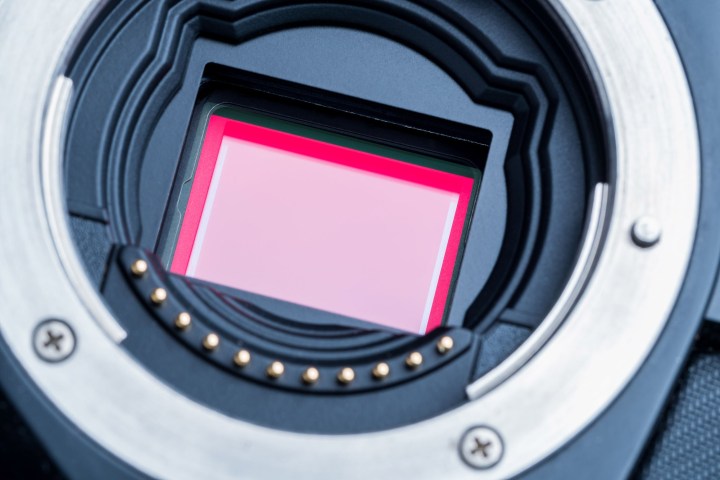
A stacked sensor dedicates a layer to collect the image data and a layer dedicated to processing that data, which allows high-resolution cameras to perform at faster rates — the tech is one of the reasons the Sony a9 is able to achieve 20 fps burst speeds. The design allows cameras to handle large quantities of data at faster speeds.
Canon’s patent describes a layered sensor that has that imaging layer and signal processing layer, but also gives the second layer the task of detecting the correct autofocus value as well as processing the image. The goal, the patent says, is to shorten “data transfer time,” or make those stacked sensors even faster. Patent language includes both contrast and phase difference, suggesting that dedicated AF layer uses a hybrid version of the two most common autofocus methods.
With this arrangement, the patent suggests, the design also allows for smaller devices, along with that enhanced performance. How the pixels and circuitry are arranged allows for both a rolling or global type shutter, which means the pixels could be exposed one at a time (which can create distortion at extreme speeds) or with a global sensor where all the pixels are exposed at once, eliminating that rolling shutter distortion.
Another potential perk of the design is a live view. The imaging diagrams and accompanying descriptions suggest that live view and the autofocus function can be done simultaneously. That is an important feature if the technology is going to be used to record video since DSLRs require using live-view mode in order to shoot video. This is achieved by using some of the sensor’s rows for autofocus and some of the live view, the patent says.
The patent uses both still cameras and video cameras as examples for where the sensor could be integrated and there is no indication of if the design makes its way into a DSLR, mirrorless, compact or dedicated video camera. Another potential possibility for video, however, is that the sensor could also generate less heat than current designs. The internal temperature of the camera is one of the reasons DSLRs have limits to recording 4K video — the camera can only shoot for so long before it would overheat, so setting a time limit avoids the issue.
Further patent language suggests that the sensor design could also use less energy, leading to better battery life.
Patents don’t always make their way from paper diagrams to actual consumer technology, but if the tech actually lives up to those claims, Canon could be working on a camera with faster autofocus performance and higher resolution video without overheating.




